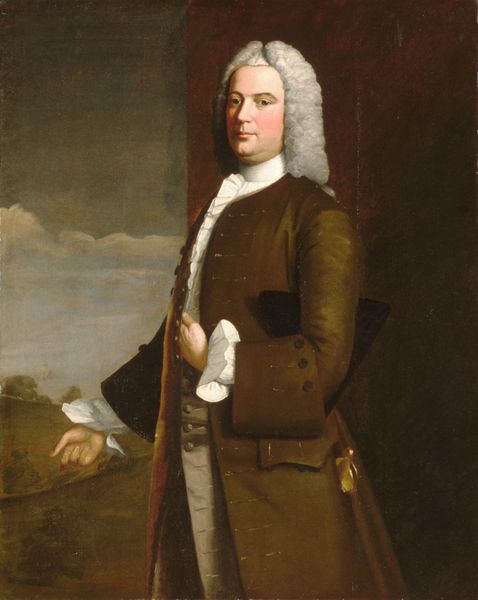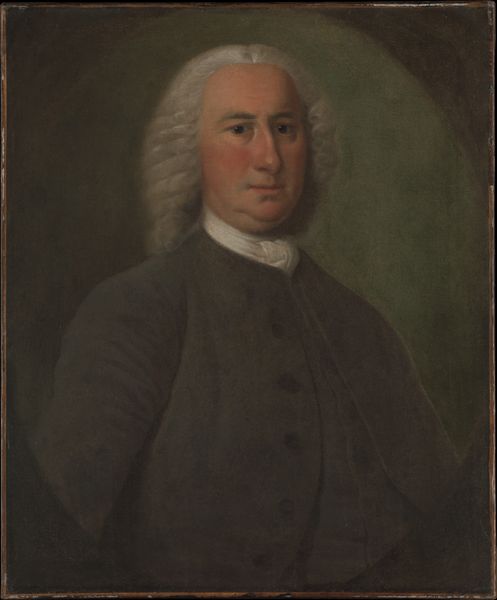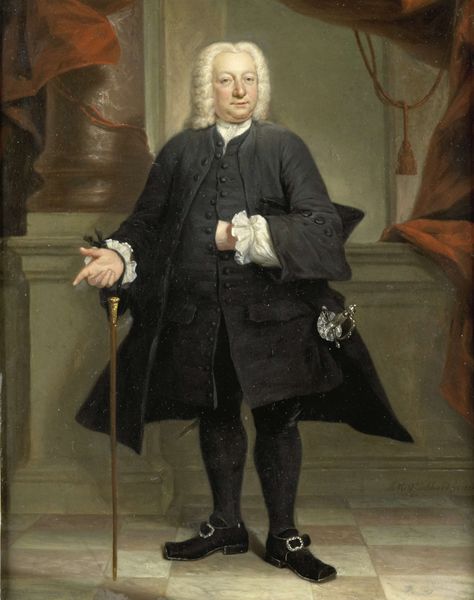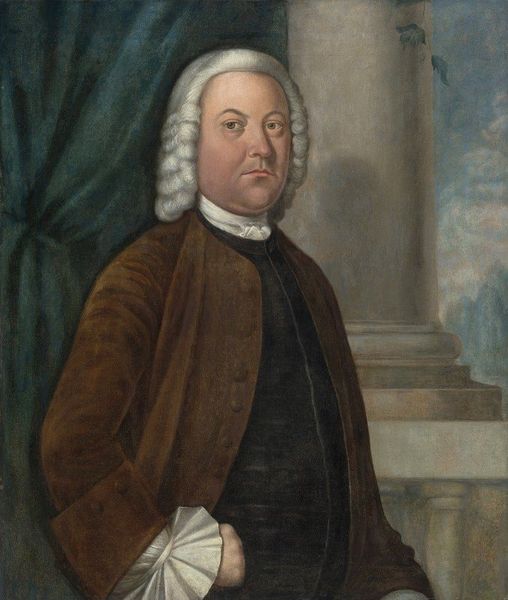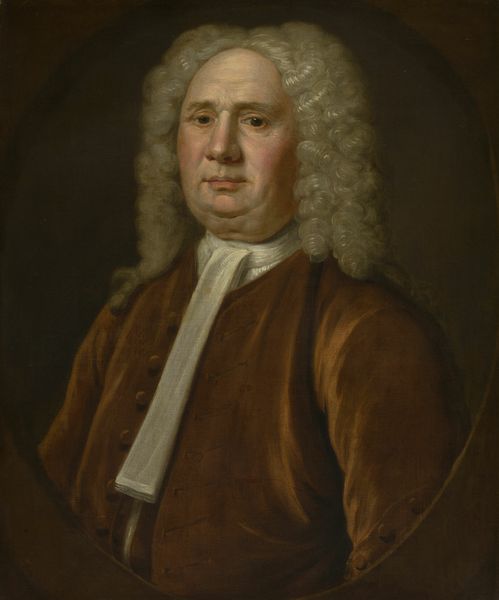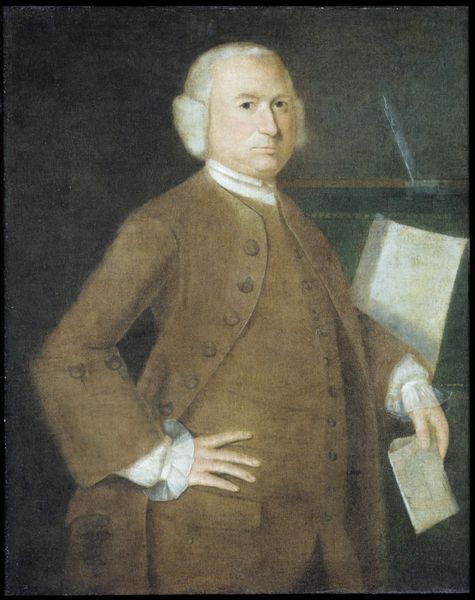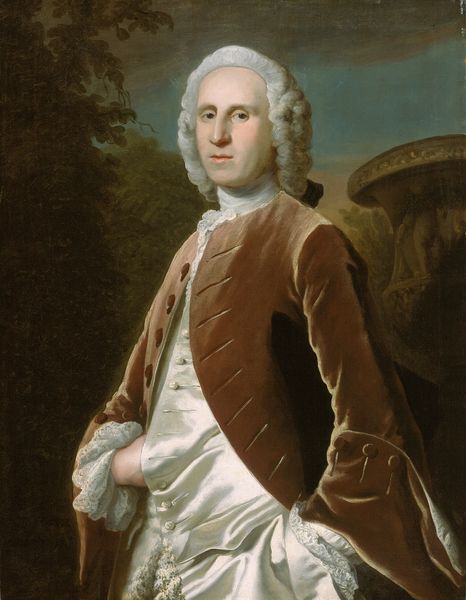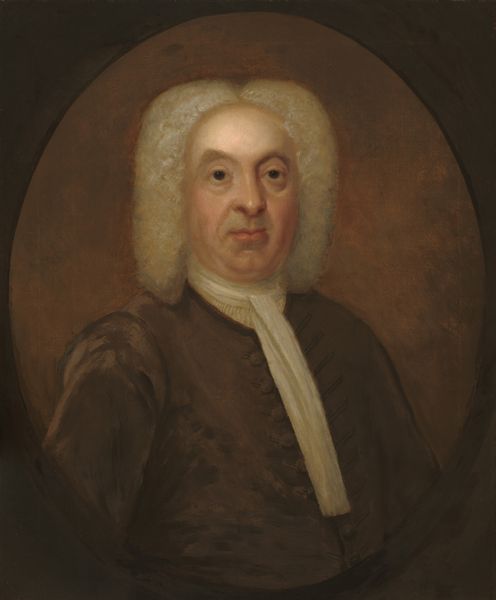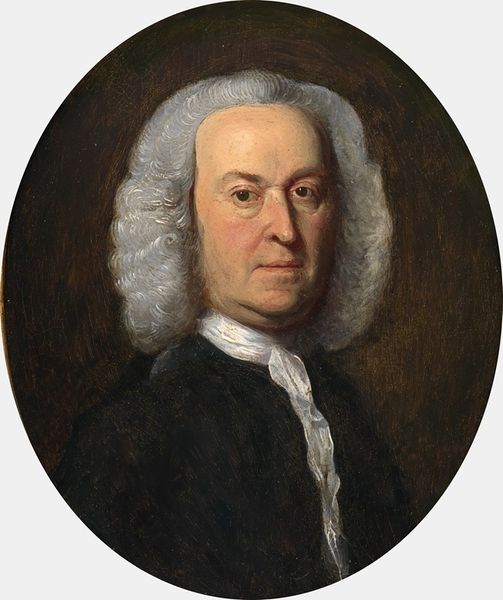
painting, oil-paint
#
portrait
#
baroque
#
painting
#
oil-paint
#
oil painting
#
history-painting
#
academic-art
Dimensions: overall: 101.2 x 81 cm (39 13/16 x 31 7/8 in.) framed: 113 x 92.1 x 5.1 cm (44 1/2 x 36 1/4 x 2 in.)
Copyright: National Gallery of Art: CC0 1.0
Editor: So here we have Robert Feke's portrait of "Captain Alexander Graydon", made around 1746, in oil paint. It's interesting how the Captain's gaze seems both direct and somehow distant. What strikes you most when you look at this piece? Curator: For me, this portrait speaks volumes about the socio-political landscape of colonial America and the role of art within it. Notice how Captain Graydon is presented. This wasn’t just about capturing a likeness; it was about projecting an image of power, stability, and gentility. Consider, how would a portrait like this reinforce societal hierarchies? Editor: So, the way he's presented is as important as who he actually was? Curator: Precisely! Think about who was commissioning these portraits. Predominantly, it was the wealthy merchant class and colonial elite eager to align themselves with European standards of respectability. Feke, although considered one of the most important painters of the period, received commissions from a very select portion of colonial society. What does that tell us about access to art and the development of a visual culture in America at this time? Editor: That the portrait itself becomes a symbol of class. Did paintings like this shape perceptions, do you think? Curator: Absolutely. Portraits like this did significant cultural work. They helped solidify the elite's self-image and perpetuate a certain vision of American society. So when you look at that direct, but distant gaze, remember it's more than a personal characteristic—it's a calculated projection, reinforcing the existing social order. Editor: That really shifts my perspective. It's like the painting is participating in a larger social narrative. I’ll definitely look at colonial art differently now, considering who had access and the messages these images conveyed. Curator: Exactly, and that is why studying Art History, allows one to understand history.
Comments
No comments
Be the first to comment and join the conversation on the ultimate creative platform.
